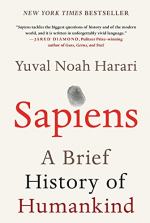
|
| Name: _________________________ | Period: ___________________ |
This test consists of 15 multiple choice questions and 5 short answer questions.
Multiple Choice Questions
1. The Mesoamerican World comprised which parts of earth in 1450 AD?
(a) Australia and eastern Asia.
(b) Most of western South America.
(c) Only the continent of Australia.
(d) Most of Central America and parts of North America.
2. What does Harari NOT list among the "premodern traditions of knowledge" he discusses?
(a) Christianity.
(b) Confucianism.
(c) Buddhism.
(d) Scientology.
3. Since around what year have most humans lived in empires?
(a) 200 BC.
(b) 3500 BC.
(c) 700 BC.
(d) 1200 BC.
4. The main argument present within the work entitled The New Instrument is that knowledge is what?
(a) Helping humankind to progress.
(b) A tool of survival.
(c) Power.
(d) Ignorance.
5. If 100 commodities are traded in the market, how many different exchange rates do buyers and sellers have to know?
(a) 9,450.
(b) 4,950.
(c) 5,094.
(d) 9,540.
6. Harari states that the leading project of what revolution is to give humankind eternal life?
(a) The Immortality Revolution.
(b) The Cognitive Revolution.
(c) The Logic Revolution.
(d) The Scientific Revolution.
7. What term does Harari define as "a system of human norms and values that is founded on a belief in a superhuman order" (209)?
(a) Cult.
(b) Culture.
(c) Society.
(d) Religion.
8. When stating that "modern science differs from all previous traditions of knowledge in three major ways, Harari states one of the ways. He says that one quality of modern science is "its willingness to admit" (250) what?
(a) Ignorance.
(b) Flaws.
(c) Agnosticism.
(d) Mistakes.
9. Harari uses apples to point out the shortcomings in what system?
(a) The education system.
(b) The stock market system.
(c) The justice system.
(d) The barter system.
10. More than what percentage of all money in the world "exists only on computer servers" (178)?
(a) 90.
(b) 50.
(c) 40.
(d) 75.
11. In what year was the scientific manifesto entitled The New Instrument published?
(a) 1620.
(b) 1864.
(c) 1512.
(d) 1438.
12. The Australian World comprised which parts of earth in 1450 AD?
(a) Australia and eastern Asia.
(b) Most of Central America and parts of North America.
(c) Most of western South America.
(d) Only the continent of Australia.
13. Harari states that "the most remarkable and defining moment of the past 500 years" (249) was what event?
(a) The onset of World War I.
(b) The onset of World War II.
(c) The cloning of a sheep.
(d) The detonation of the first atomic bomb.
14. The Aztec Empire ruled how many different tribes and peoples?
(a) 48.
(b) 371.
(c) 276.
(d) 189.
15. The Andean World comprised which parts of earth in 1450 AD?
(a) Australia and eastern Asia.
(b) Only the continent of Australia.
(c) Most of Central America and parts of North America.
(d) Most of western South America.
Short Answer Questions
1. Who wrote The Mathematical Principles of Natural Philosophy?
2. What is hubris?
3. What causes a particular science to be designated as an exact science?
4. In what year did Magellan circumnavigate the earth for the first time?
5. The total value of goods and services produced by humans in the year 1500 was how much in 2015 money?
|
This section contains 476 words (approx. 2 pages at 300 words per page) |

|




